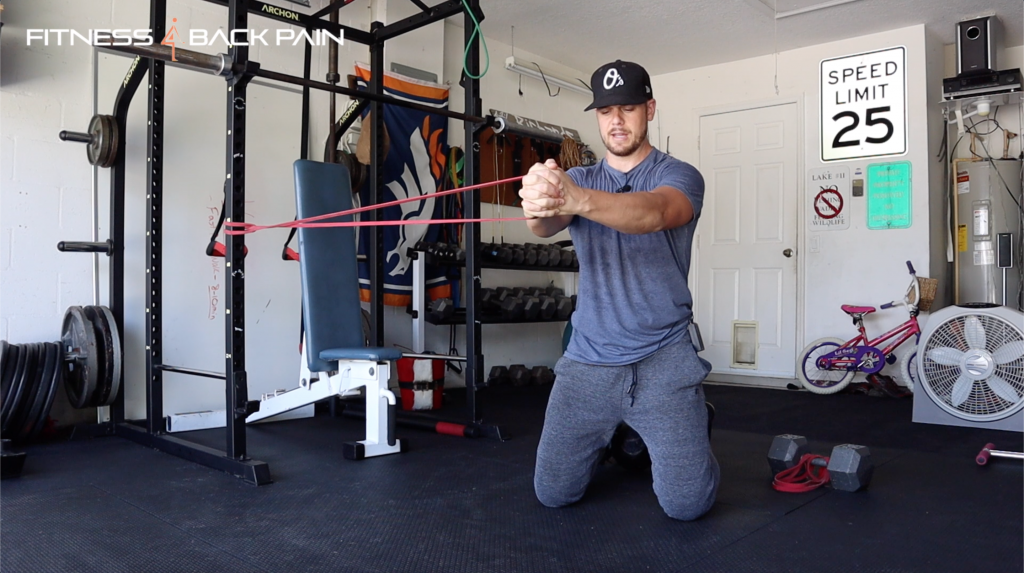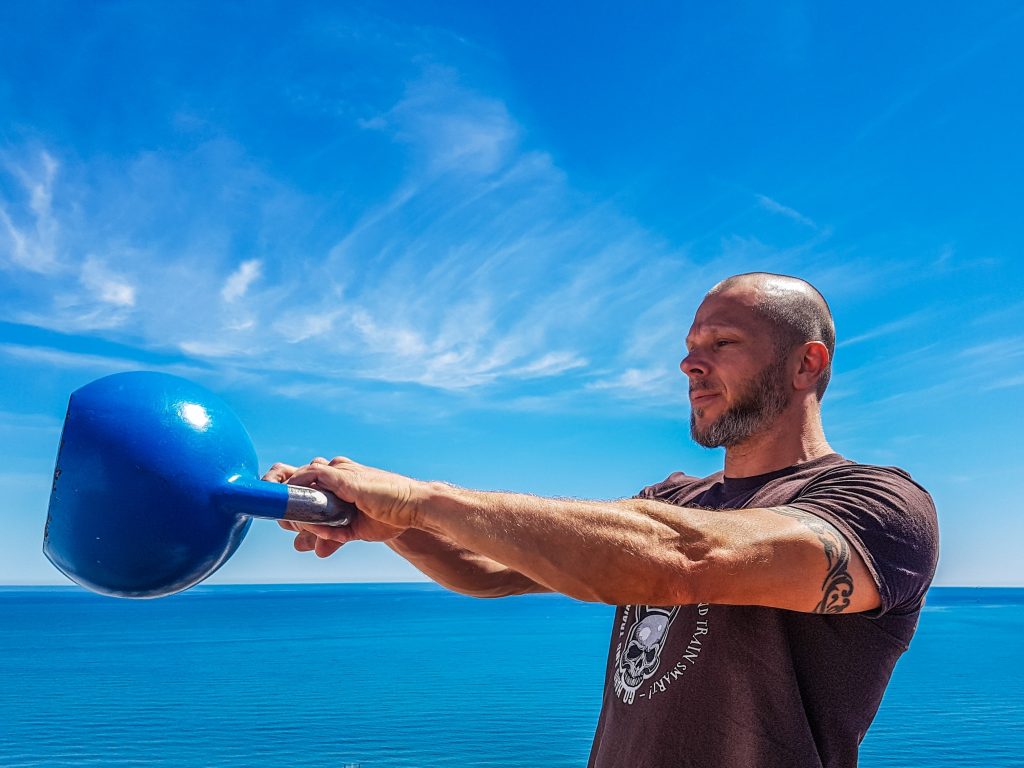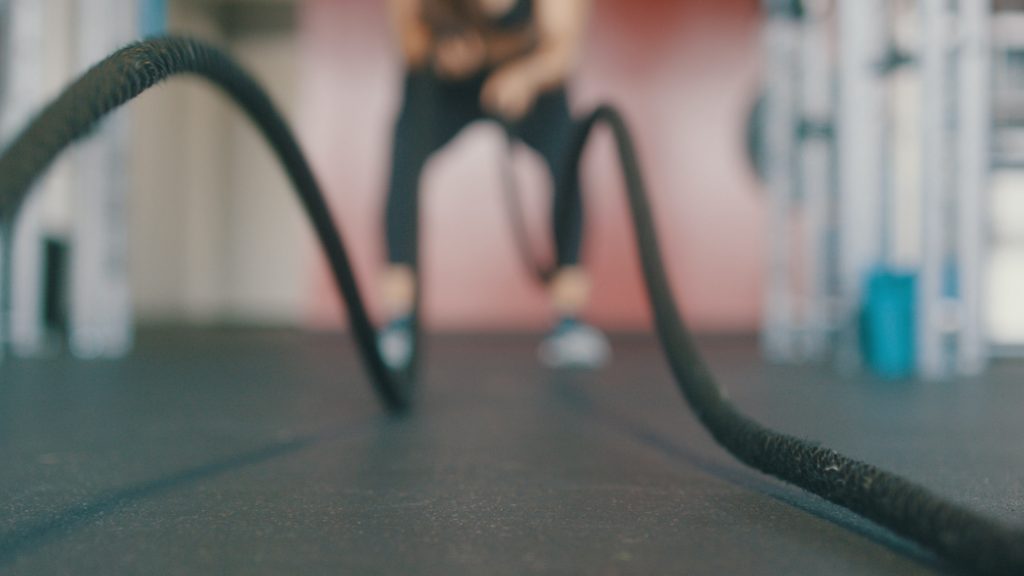3 Rules For Exercising With a Herniated Disc (2020)
Exercising with herniated discs or any history of disc injury for that matter can be extremely scary and frustrating all at the same time. You don’t want to do more damage but everyone and their mother is telling you that exercise is SOOO important and if you don’t get out and do it the pain will get worse.
How are you supposed to know what exercise is safe for your herniated disc and what is not?
If this is you then stick around over the next couple of weeks because I am dedicating this entire series to exercising with herniated discs and other similar disc injuries.
Today you will discover 3 Rules You MUST FOLLOW if you are looking to start an exercise routine with any type of disc injury.
Watch the video below or keep reading for the text version!
Before we jump in the 3 rules let's cover some questions I know you have!
Can I Exercise With A Herniated Disc?
 Of course, you can!
Of course, you can!
It’s actually really important that you DO exercise despite your disc injury.
Where the issue comes in is when you do the wrong exercises for your specific situation.
You see, whether you are a beginner or a more avid gym enthusiast you naturally tend to default to the style of exercise you have always done.
You may have learned it from an old coach or picked it up over the years seeing other people bounce around your local gym.
The bad news with doing it this way is that odds are, NON of it is what you should be doing if you’re exercising with herniated discs.
Where your focus needs to be is building what I call “Smart Strength” while you build new habits around your daily movement that could be making your herniated disc or any disc injury worse.
What Exercises Should I Avoid With A Lumbar Herniation?
 SO the best way to answer this question without leaving you with too much grey area is to KISS ==> “keep it simple stupid”
SO the best way to answer this question without leaving you with too much grey area is to KISS ==> “keep it simple stupid”
The majority of lumbar herniations happen towards the back of the spine. This can be from a number of different reasons but the most common is just wear and tear over time which guess what…
IS TOTALLY NORMAL!
Yup, that’s right. You could line up 15 of your friends and have MRI’s done on their backs and the majority of those 15 friends will have some level of lumbar herniation.
The crazy thing is not everyone who is exercising with herniated discs will experience pain.
This can be both super frustrating and a huge relief depending on your personal belief about pain, what you have been told about your pain, and your self-efficacy.
Without diving too deep into the pain with herniated disc discussion. I want your focus and mindset to be on NOT associating your pain with your MRI results.
This is going to serve you well when you start exercising and trying to navigate certain symptoms you may come across.
Alright, so what exercises should you avoid with a lumbar disc herniation?
To answer this let’s take 2 statements and see how many exercises or activities in the gym we can apply them to.
- Careless spinal flexion under load.
- Repeated unnecessary flexion if there are better options for you.
If you think about it trying to max out on deadlifts with a herniated disc or lumbar spine sensitivity is something that you should dial back on until you can get your symptoms under control.
The same goes for deep squatting and barbell (unsupported) bent over rows. Not that these exercises are dangerous but while you work on desensitizing your pain and building more resilience and stability around the lumbar spine these exercises are not necessary for building strength with a herniated disc.
Other activities you can focus in on are simple things like picking things up off the ground, racking and un-racking your weights, moving benches and other equipment around carelessly without paying mind to the position of your lumbar spine.
Bringing awareness to the habit of bending, which again, is not BAD for the body but something you should be mindful of when you’re in the gym as you work on reversing the disc herniation.
3 Rules For Exercising With A Herniated Disc (lumbar disc bulge, herniation or rupture)
Exercising With A Herniated Disc Rule #1
 So the first rule you must follow when it comes to exercising with herniated discs, disc bulges, or disc ruptures is to always think about supporting and stabilizing the lower back.
So the first rule you must follow when it comes to exercising with herniated discs, disc bulges, or disc ruptures is to always think about supporting and stabilizing the lower back.
Simply exercising more isn’t going to cut it and like most people, you will normally default to what you have always done for exercise instead of really learning what is best for you.
This will look different for everyone but it could be jumping right into deadlifting, squatting, or heavy pulling exercises like barbell bent-over rows.
The problem is, if you’re having some kind of disc herniation or a history of disc issues, you’ve got to think smart about what you do in the gym.
So in order for us to focus more on a stable, supported lumbar spine we have to take out the exercises that are going to cause too much flexion, extension, or unnecessary movement in the lower back.
This is an even bigger issue when it comes to core training.
A lot of the mainstream or popular core exercises don’t focus on stabilizing the herniated disc area. You’re doing things like sit-ups, crunches and leg raises which are all things that are causing unnecessary movement in the lower back.
On top of that, you may have the bad habit of trying to loosen up your lower back with stretching before your workout even starts.
This is a big, big mistake.
We have got to stop treating the lower back as if it’s like the thoracic spine, the shoulder, or the hips. The lumbar spine loves to be stable and it likes to be trained stable.
Unlike those other joints where they love freedom in their ranges of motion.
If you want to get back to deadlifts, squatting, or just basic everyday movements without chronic pain or making your disc herniation worse. You’ve got to think about training in a way that focuses on stabilizing the lower back.
Exercising With A Herniated Disc Rule #2
 The second rule for exercising with herniated discs, bulges, or ruptures is you’ve got to think about how you’re structuring your overall workout.
The second rule for exercising with herniated discs, bulges, or ruptures is you’ve got to think about how you’re structuring your overall workout.
To keep this simple I typically categorize gym enthusiasts into 2 camps.
Camp One: Your program focuses primarily on heavy lifts only. These people focus their entire workout around the big lifts and its all that really matters to them. This is a small fraction of the population in gyms today.
Camp Two: You’re the average strength and overall general fitness enthusiast. You like a good 45-minutes to an hour, full-body workout and prefer to train 3-4 days a week.
Now in those two camps, the key thing is to think about investments.
By training smarter, picking the right exercises, and training around your threshold you’re making investments in your spine that will serve you well in the long run with your disc herniations, ruptures, or bulges.
Now, if you find yourself in Camp Two, I want you to save your big exercises for last.
This means no more squatting, deadlifting, or other major lifts first.
If you have a sensitive disc issue, what I always suggest to people is to start with the smaller exercises first and in my book, this is ALWAYS the core.
Doing this is going to create stability and structure in the trunk and around your spine from there, do the smaller things like pushups, arms, bodyweight squats, etc.
That’s going to get the blood pumping, get your body ready and active, and aware of the movements that you’re going to be doing.
Now that the core and smaller lifts are out of the way you can finish up your workout with the bigger “major muscle group” lifts.
Yes, you may be a bit more tired and not able to do as much weight but you’re putting less stress on the joints and not having to control and manage such heavy loads.
Exercising With A Herniated Disc Rule #3
 Now my third rule for exercising with herniated discs or similar issues is to be ready to change on the fly.
Now my third rule for exercising with herniated discs or similar issues is to be ready to change on the fly.
Due to fear, worry, anxiety, pain history, panic, sciatica, or whatever you might be experiencing, how you feel could change within a second. You have to be ready and willing to change on the fly and not be frustrated or get upset like…
“Oh man, I did these lunges last week and I was fine!”.
“I did these bicep curls two days ago. And now when I do them, my back hurts.”
Choosing not to just push through this and doing it anyway is serving a greater purpose that will pay you back in the long run.
Instead, what you want to do is always stay within your pain threshold. Everyone who has chronic back pain or any kind of disc injury (herniation included) has a pain threshold.
This is where your body doesn’t feel safe and will normally start to trigger symptoms like pain, tightness or however else your body responds.
So instead of just pushing through this threshold and working through the pain, be ready to change.
For example: If you can’t do flat bench, press that day, no worries just do incline instead.
If you can’t do loaded barbell squats, that’s totally fine. You can do something else like reverse landmine lunges (a great exercise for overall leg and hip development).
The key to exercising with herniated discs is to play it smart, play for the long game, and always be willing to adapt to your own specific situation.
If you do that, you don’t have to worry about doing the wrong thing.
To exercise or not to exercise with a herniated disc?
If you have been cleared to exercise and you are not experiencing any major issues such as loss of feeling in your legs, loss of bowel control, or consciousness then I saw go freakin exercise.
You are not fragile.
You are not tainted.
You are not broken.
I stand (or actually I’m sitting right now) before you here today after rupturing my disc and NOT having it medically fixed fully capable of doing all the things my doctor told me I would never do again.
It was a lot of work and I made a lot of mistakes and I still have to be cautious with what I do but I came out on the other side now able to teach thousands of people around the world how to do this for themselves.
If you want to start building strength confidently I encourage you to check out the Smart Strength Membership. Its where all of my disc herniation, bulge and rupture exercise coaching is done through strategic workouts designed with you in mind!
Stay tuned for next week we are going to be covering the best core exercises for herniated discs!

Hi I recently had a spinal decompression surgery as I was suffering from bilateral sciatica. I was twenty in July so am very young to be struggling with these sorts of issues. I am planning to get back into the gym in a couple of months time but am not overly sure of what I am able to do. Sadly I am still struggling with sciatic pains in my right leg post surgery which is very frustrating.
Any help or advice would be amazing
Thanks